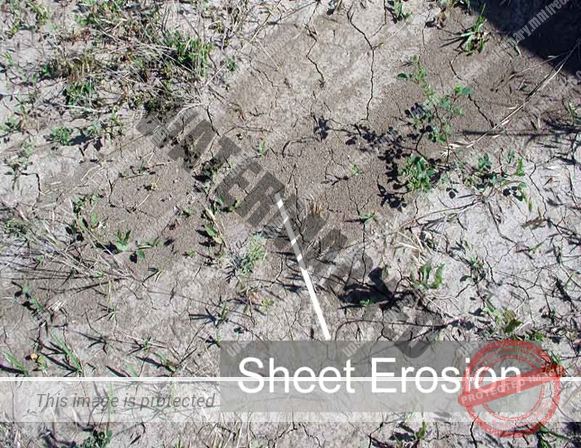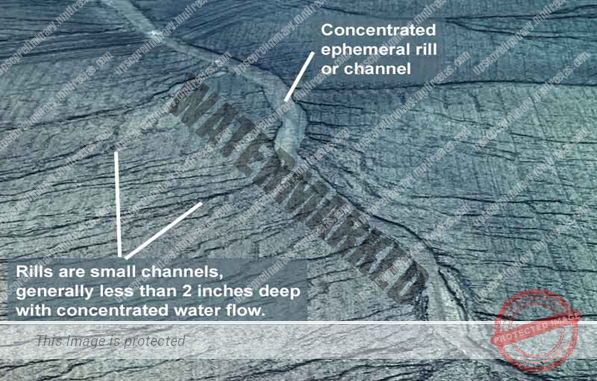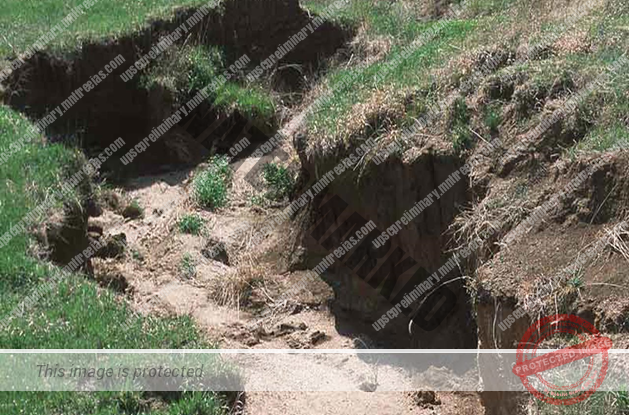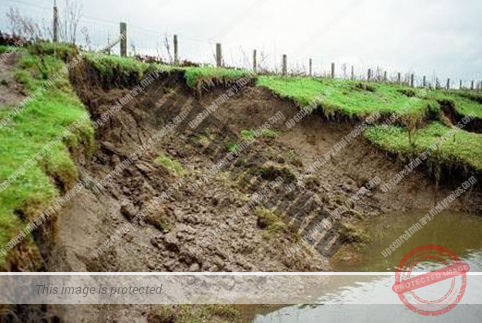- SOIL DEGRADATION
- SOIL EROSION, WATER EROSION, RAINDROP EROSION, SHEET EROSION, RILL EROSION, GULLY EROSION, STREAM BANK EROSION, COSTAL EROSION & WIND EROSION
UNIT 5 – SOIL – PART 10
SOIL DEGRADATION
Soil degradation can be defined as the Decline in Soil Fertility when the nutritional status declines and depth of the soil goes down due to erosion and misuse. Soil degradation is the main factor leading to the depleting soil resource base in India.
It encompasses
- Physical (Soil Erosion).
- Chemical (Salinity and Alkalinity, Pollution).
- Biological Deterioration (Pollution and Deterioration of Vegetal Cover).
SOIL EROSION
- Soil erosion is the loosening and displacement of topsoil particles from the land.
- Soil erosion in nature may be
- a slow process (or geological erosion) or
- a fast process promoted by deforestation, floods, tornadoes, or other human activities.
WATER EROSION:
- Running Water is one of the main agents, which carries away soil particles.
- Soil erosion by water occurs by Means of Raindrops, Waves Or Ice.
- Soil erosion by water is termed differently according to the intensity and nature of erosion.
- (i) Raindrop erosion (ii) Sheet erosion (iii) Rill erosion (iv) Steam banks erosion (v) Erosion due to landslides (vi) Coastal erosion.
RAINDROP EROSION:
Raindrops behave like tiny bombs when falling on exposed soil, displace soil particles and destroy soil structure.
Presence of vegetation on land prevents raindrops from falling directly on the soil thus erosion of soil in areas covered by vegetation is prevented.
SHEET EROSION:
Sheet erosion takes place on level lands after a heavy shower and the soil removal is not easily noticeable. But it is harmful since it removes the finer and more fertile topsoil.
RILL EROSION:
- In rill erosion finger like rills appear on the cultivated land after it has undergone sheet erosion.
- These rills are usually smoothened out every year while forming.
- Each year the rills slowly increase in number become wider and deeper.
GULLY EROSION:
Gully erosion is common on steep slopes. Gullies deepen with rainfall, cut the agricultural lands into small fragments, and make them unfit for cultivation. A region with a large number of deep gullies or ravines is called badlands topography. Ravines
are widespread, in the Chambal basin. When rills increase in size, they are called gullies. Ravines are deep gullies.
STREAM BANK EROSION:
The erosion of soil from the banks (shores) of the streams or rivers due to the flowing water is called bank erosion.
COASTAL EROSION:
Coastal erosion of soil occurs along seashores. It is caused by the wave action of the sea and the inward movement of the sea into the land.
WIND EROSION:
- Soil erosion by wind is more common in areas where the natural vegetation has been destroyed. Such conditions occur mainly in arid and dry areas along the sandy shores of oceans, lakes and rivers.
- The loose soil particles are blown and transported from wind by following three ways: (i) Siltation: blown by the wind in a series of short bounces. (ii) Suspension: transported over long distances in the form of suspended particles. (iii) Surface Creep: transported at ground level by high-velocity winds.




